










Welcome to the Power Up Your Business Playbook, the ultimate guide for foodservice and hospitality operators looking to take their business to the next level. At Sysco, we understand the challenges that come with running a successful business while maintaining high-quality products and services. That’s why we’ve created this playbook, to provide you with the tools and strategies to power up your business and boost your bottom line.
This comprehensive guide is packed with strategies and tools to help you optimize your menu, increase revenue, manage labour costs, and improve hiring practices. With our expert guidance, you’ll be able to identify the items that are driving profitability, optimize your pricing strategy, and develop a revenue growth plan that aligns with your business goals.
We’ll also dive into financial statements to help you identify areas in your P&L where you can reduce costs and maximize profitability. And we’ll provide guidance on how to attract and retain top talent in a competitive labour market, and how to create a culture that fosters employee engagement and loyalty.
Don’t let your business get left behind in this competitive industry. With the Power Up Your Business Playbook, you’ll have the tools and strategies to take your business to the next level and achieve your goals. Whether you’re an experienced operator or just starting out, this playbook is your ultimate resource for powering up your business.


We’ve all heard the old adage: the menu is the only marketing piece a restaurant produces that 100% of its guests see. Whether delivering this menu in a hard copy or a digital format, this idea reigns supreme. A restaurant’s menu is an amalgamation: part expression of the brand, part summary of passions, and entirely linked to a restaurant’s profitability.
There are proven and necessary steps to ensure a profitable menu, such as: knowing the costs, knowing the costs for each plate, understanding how portion size, waste, and theft can potentially impact profits, and creating a menu design intentionally featuring the most profitable items on the menu. Leveraging the power of images and gaze patterns, guests are subtly directed to these items.

A person looks at a menu for an average of 109 seconds on a constant loop. The reader’s eye follows a predictable, critical path as it scans the page. Therefore, in order to maximize profit potential, the position and placement of your most profitable items in eye-catching spots increases the likelihood of them being ordered. Your primary goal is placing the highest gross profit category in the number one position on the menu.
Understanding that menu design drives a restaurant’s revenue is the single biggest takeaway needed to make a menu more profitable. The next steps are leveraging the knowledge to improve digital presence and respond creatively to the challenges of inflation.


If I want a menu to be profitable, I need to...

KNOW THE EXACT PORTION & COST FOR EVERY PLATE SERVED 1


Plowhorses sell well, but don’t do as well in profit margin. Can you make these items more profitable by increasing price or decreasing cost?
Dogs don’t produce for you at all. Do you need these items on your menu?
Stars sell well and they bring the highest gross profit margin. Emphasize your Stars on your menu.



Puzzles don’t sell as well as you’d like, but when they do, the profit margin is above average. Look for ways to sell more of these items.
Identify your top 10-15 products by expense and implement strict portioning and critical item tracking
We are often asked about what the “right” or “average” food cost percentage should be. The reality is that there are different food cost percentages for every cuisine type and service style.
For example, pizza restaurants and steak houses represent the extremes at 25% and 45%, respectively. Most other restaurant types operate somewhere between those two, with an average of 28-35%.

Your food cost percentage should be defined by your budget & profit goals.
I N DUSTR Y AVERA G E 28 -
35%


Knowing average food cost percentages helps to strategize the appropriate response to inflation and increase overall revenue.
Create
syscostudio.com

and design recipes and menus, as well as engineer your menu for higher profitability.
Flavour-forward, unique, and memorable experiences differentiate restaurants from their competition. A strategic way to set your operation apart is to utilize signature trending condiments, sauces, and dressings that drive customer interest and provide an opportunity to upsell a dish. Check out these low-labour solutions to enhance the flavour, value, and profitability of menu offerings.
According to the National Restaurant Association (NRA), North Africa ranks in the top 5 global regions influencing today’s menus. As cravings for North African flavours rise, experiment with spices like berbere and dukkah, and pull from the global pantry to highlight on-trend flavours like harissa. Made with a paste of dried red chile peppers, garlic, spices, lemon juice, and olive oil, harissa is a unique North African fiery-hot sauce that makes an excellent addition to chicken, pork, lentils, and vegetables. Serve up a signature spicy tahini-honey sauce or harissa aioli to add complexity, freshness, and global exploration to various menu offerings.


Set your operation apart by utilizing signature, trending condiments, sauces, and dressings that drive customer interest and provide an opportunity to upsell a dish!
Distinctive dressings provide a point of differentiation and drive a higher price point for many menu builds. Whether using Sysco products or scratch-made combinations, the options are infinite. Cross-utilize dressings and sauces on a variety of menu items – from salads and sandwiches to flatbreads and wings – to provide the adventurous customization opportunities diners are seeking. Elevate your selections with these tips:
Oils & Fats: When selecting oil, consider the flavour’s intensity to avoid overpowering the seasonings. Try avocado or coconut oil or any milk, from dairy to alternatives like almond to coconut.
Herbs & Spices: Make your final product look and taste unique with herbs and spices from dried basil and lemon peel to smoked paprika and saffron.

Acids: Whether it’s wine, vinegar, fruit juice or a combination, anything goes that properly complements your fat and spice selections.
About 63 million tons of food is wasted in the U.S. each year. With consumers acutely aware of food waste’s environmental and economic impacts, they’re eager to support operations displaying efforts to reduce these effects. Raise the visibility of zero-waste cooking by rescuing blemished, misshapen, or visually imperfect produce and repurposing in condiments like dips, jams, or pickles. Or, fully leverage ingredients by using the elements that would typically go to waste. For example, top high-quality proteins with carrot-top chimichurri, or upcycle watermelon rinds and seeds in an enticing entrée featuring watermelon-brined pork chops, watermelon salad, pickled watermelon rind, and roasted spicy watermelon seeds. The stems of many fresh herbs such as cilantro and parsley are often thrown out when they can be the most flavourful part. Finely chop them up to add to a salad or purée them as part of a sauce for a little extra zip.
Emphasize your zero-waste efforts to protect the planet while capturing customer interest and maximizing your profits.
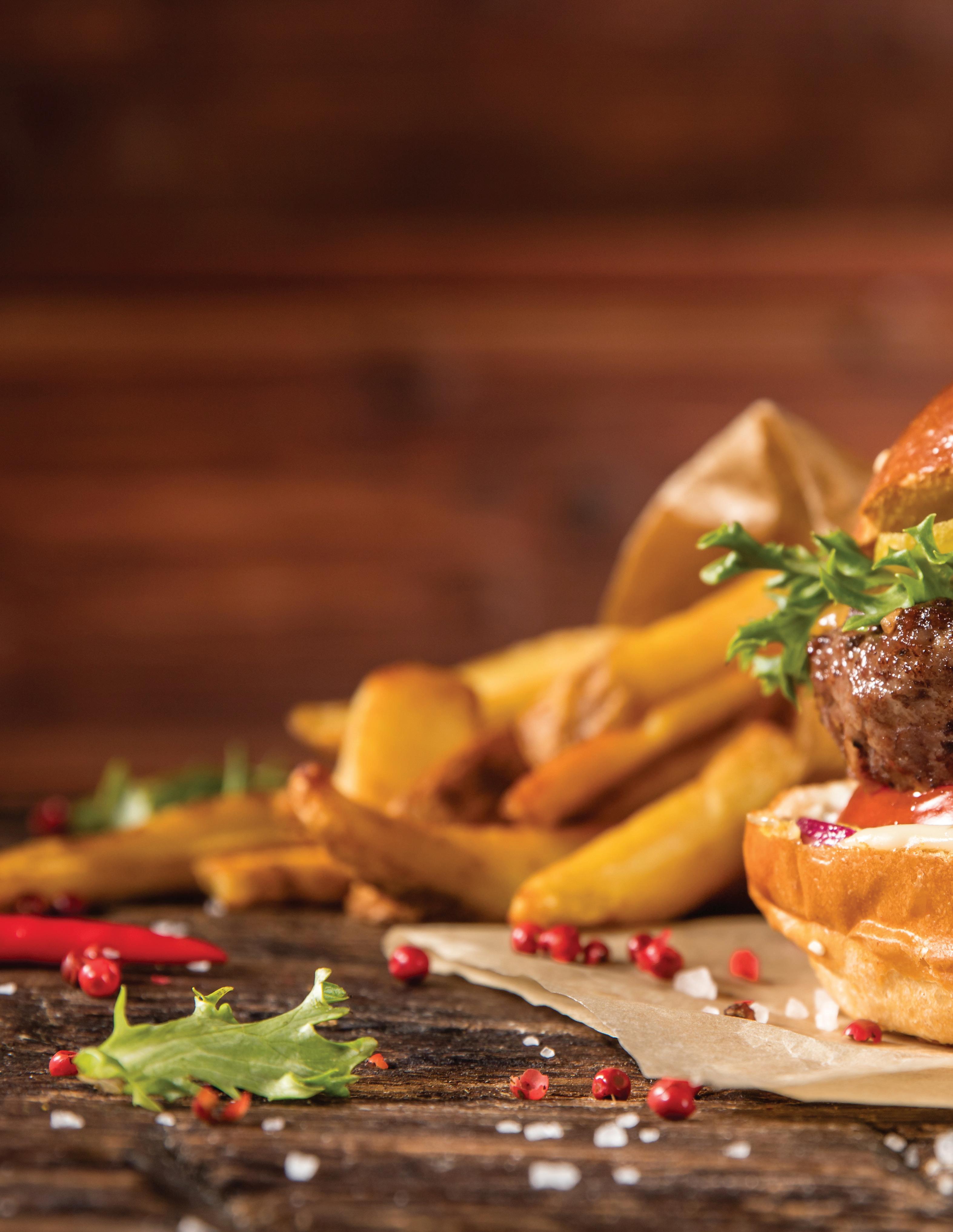

For years we have managed a restaurant’s P&L in a rule of thirds. This is where the menu price is determined by multiplying the plate cost times three. From that menu price, typically 30% goes to Cost of Goods, 30% goes to labour, and 30% goes to business expenses, which leaves 10% profit for the operator. In the past, we have focused on food cost and price adjustment to impact our overall P&L profitability. However, as inflationary pressures grow, we must review the entire P&L to identify opportunities to grow our profits from Revenue to the Bottom Line.

So how can we use our P&L to help manage this?
First, we must remember that a P&L is only 5 numbers: Revenue, Cost of Goods, Labour, Expenses and Profit. We must balance the COGS (Cost of Goods Sold), Labour and Expenses against our Revenue to get to our profit goal. Looking across all categories in the P&L will have the greatest impact and prevent our prices from getting so high that we are no longer marketable. Let us look at each of the 5 key elements and ways to improve them.
REVENUE is the number one way to improve your profits. Growing your business above where it is today will allow you to add more dollars the fastest. Creating new and innovative revenue streams such as theme nights or takeout home meal kits will drive positive revenue!
COST OF GOODS is typically the largest opportunity to improve by controlling waste, theft, and over-portioning. Implement processes, such as a waste-log or count-sheet on high-end product, to keep these under control. Understanding your theoretical food cost is important for you to understand and share to give a real measurement of what success looks like to your staff.
LABOUR is best managed when it is forecasted to your business. One way to do this is to predict your business for the week, multiply by your target labour percent, which will determine your total labour spend for the week. Take that dollar amount and divide it by your average hourly wage, which will give you the total hours you have to use on your schedule.

EXPENSES should be reviewed monthly. This identifies where you see changes in the month- tomonth expenses that may be going unnoticed. Are all your expenses necessary? Can you renegotiate your services for a lower expense?
PROFIT is a win when you hit or exceed your goal!
Focusing on the big picture can help you to maintain your profitability. The profit you need to reinvest in your business, reinvest in your people and funds for those rainy-day events is critical to the continued success of your foodservice dream.


Large portions of beloved and signature options to feed 4 or more.
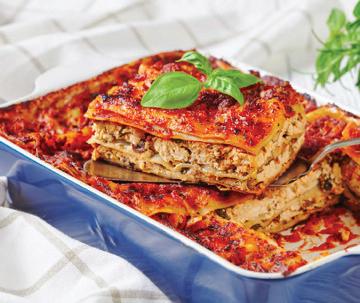
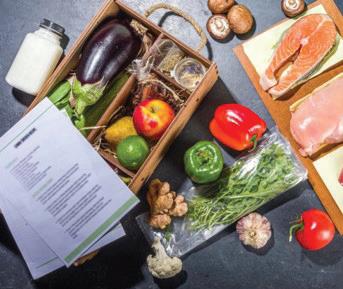
Drive revenue by offering partially prepared items to finish at home. Great opportunity to market towards busy families that are on-the-go!
Whether unlocking free food on an app or ordering online, patrons are embracing digital loyalty programs.

Drive revenue by offering partially prepared items to finish at home. Great opportunity to market towards busy families that are on-the-go!
Leverage limited time offers (LTOs) and play up on nostalgia. Restaurants are offering throwback specials that take on inflation. Even though they are limited offers, they create a perception of fair pricing.



Prep Time
Field-pack heads of commodity iceberg lettuce = 40 minutes
Open four 5lb bags of pre-cut iceberg lettuce = 1 minute
Waste
Field-pack heads of commodity iceberg lettuce = 40%

Open four 5lb bags of pre-cut iceberg lettuce = 0%
Prep Time
Cost Effective
Minimizes labour and reduces waste
Consistent
In quantity & quality
Maximizes Food Safety

Reduces cross contamination and Ready to eat
Saves space in your walk-in
24 count field-pack of commodity romaine lettuce = 30 minutes
Open six 2lb bags of pre-cut romaine lettuce = 1 minute
Waste
24 count field-pack of commodity romaine lettuce = 37%

Open six 2lb bags of pre-cut romaine lettuce = 0%
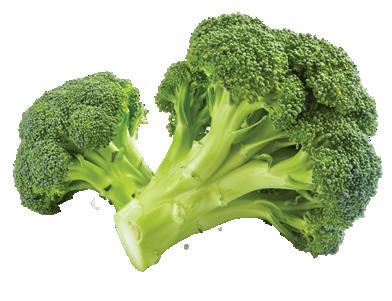
Prep Time
Cutting florets from broccoli heads = 30 minutes
Open bags of pre-cut broccoli florets = 1 minute
Waste
Cutting florets from broccoli heads = 40%
Open bags of pre-cut broccoli florets = 0%

Prep Time
Cutting florets from cauliflower heads = 30 minutes
Open bags of pre-cut cauliflower florets = 1 minute
Waste
Cutting florets from cauliflower heads = 60%
Open bags of pre-cut cauliflower florets = 0%
Consider food cost vs plate cost when it comes to “Speed Scratch” Items.
• Combine high-quality prepared food items with those made from scratch
• Ready-made recipes save time, labour, and food costs
• Cross-utilize these main ingredients without adding any additional inventory
• Simplify your menu with added flexibility
• Control labour cost by getting more done in less time
• Utilize your culinary skills where it is most effective
The targeted food cost of around 30% is outdated. With so many excellent valueadded products and with the noted labour shortage, moving to the “speed scratch” / ”speed gourmet” mentality and support balancing labour and food costs.
If the general equation is Food Cost (30%) + Labour Cost (~35%) = roughly 65% of the sell price of a dish, then can we afford to jump up our food cost to say 4045% and find items that allow us to drop our labour cost to 10-15%? This allows for greater profitability and solves the issue of labour shortage because time being paid out is ACTIVE time during income generating periods instead of time spent in PASSIVE periods such as prep times.
Example:
We’re making a chicken sandwich, so we’re going to use a value-added breaded chicken product. We need a sauce to go with it, so we are going to adopt the “speed scratch” mentality and turn our ranch dressing that is already in our inventory into a chipotle ranch by combining with pureed chipotles in adobo. We need a slaw for the sandwich so we’re going to use a value-added produce item such as the Shredded Kale Blend, therefore taking the prep away from shredding the kale, brussels sprouts, etc. Again for the dressing, we’re going to take our value-added coleslaw dressing and add some more vinegar and various spices to make it into a Harissa slaw dressing. Just a little time needed to prep and use these ingredients in versatile ways. Now it’s time to cook our order, which is considered ACTIVE time in which income in generated.
So all in all, we took 4 value-added items and manipulated two of them to create our own unique product. Spending a total of 10 minutes in passive prep time. Sure, the food cost on this item might be in the 40-45% range, but the labour cost is only in the 5-10% range. Adapting menus in this way to battle the rising minimum wage and labour shortage and generate more income is on the rise.
• It’s easy to implement
• Ready-made recipe components hold down food costs
• Speed scratch cooking allows for greater seasonal flexibility

• It simplifies menu development and redesign
• Staff can cross-utilize main ingredients without additional inventory
• The kitchen gets more done in less time, and that helps control labor costs

Conventional wisdom triggers two main responses during periods of inflation: raise menu prices and focus on Cost of Goods. While these two aspects are important, along with labour cost and variable expenses, they neglect one aspect of restaurant profitability that can potentially drive even greater returns to the bottom line: Revenue.
The mantra “A penny saved is a penny earned” is only partially correct within the context of a restaurant profit and loss statement. This is for two reasons:

1. Cost of Goods Sold is only one component of expenses within a P&L. A 10% increase in COGS does not translate directly into a 10% decrease in profits- in fact it’s likely to make a 2-3% impact- which is still significant considering the average profit margin for restaurants is less than 5%.
2. A penny saved is likely to be lost along the way. The main drivers of food cost are actually over-portioning, theft, and waste. Simply overportioning any protein by even ½ an ounce easily adds up to thousands of dollars per year in lost profits.
Strict controls over portioning and inventory are the most effective way to manage rising costs of goods, in conjunction with accurate menu pricing. So, if COGS is not the strongest lever to increase profits, what is?
Restaurants want to take advantage of what is known in microeconomics as ‘economies of scale’. Economies of scale are benefits realized when a business can handle greater sales volume without incurring an equivalent measure of expense. What does that look like in a restaurant? Your restaurant serves 100 covers on an average Monday. After COGS, labour, fixed and variable expenses you profit about 5% on those covers. Now, let’s say you are able to increase your Monday average to 120 covers: you are still paying the same overhead as you did with 100 covers, so the only expense incurred on those additional covers is the cost of the goods. Assuming a food cost of 35% that means you are driving 65% of that revenue straight to the bottom line.
During inflationary times consumers tend to dine out less, so attracting additional diners can be challenging. However, your P&L doesn’t care where the additional revenue actually comes from, just that you are generating more sales and your expenses aren’t increasing dramatically. This is when savvy operators will focus on new consumer preferences and channels that have arisen during covid, like off-premise features, streamlining service, leveraging technology, and utilizing online tools to interact with customers. Internally, promoting higher margin menu items and suggestive selling can easily add 20% to a check average. Unlike the 20% growth in the above example, this added revenue is gained without increasing the number of customers walking through the door. The next two pages provide some guidance on how to drive revenue in today’s marketplace.
1 2 3 4

The pandemic accelerated a variety of new experiences consumers have access to while dining out. Consumers are now reluctant to return to the past, which gives operators the opportunity to build revenue in new ways! In other words, diners will continue to dine- out, and creative operators will benefit from focusing on offering fun & unique experiences!
Around 90% of diners who have not visited a restaurant will make that decision based on what they see on websites, social media, and especially reviews. That’s 9 out of 10. If your online Brand does not engage your potential customers, you’re left with just 10% of the market to fight over.
The National Restaurant Association estimates that by 2023, 30% of ALL restaurant orders will be eaten off-premise, whether pick-up or delivery. And the vast majority of those orders will be placed online. The ability to order online via your website is your primary conduit for capturing what will soon be nearly 1/3 of all restaurant orders placed. And no, Facebook doesn’t count.
Have you ever received a take-out order and wished you had dined-in? The delicious food crammed haphazardly into a 9x9 box leaving a lack-luster experience. What if we can give the experience of dining-in with our off-premise food? A few fun ideas are to include a customized playlist of music that replicates the theme of the restaurant or including simple trivia games about the community or cuisine. Include a recommended viewing list for families on Crave, Disney or Netflix.
Right now the #1 demographic spending money in restaurants is Millennials, 25-40. There are a lot of new homeowners, one or both are employed, and they have young families. Ordering for a family online can prove a challenge when coordinating everyone’s selections and dealing with separate menus. Why not bring back the family meals? Family style meal orders can be taken online with a time buffer for preparation. They can utilize less expensive ingredients and less packaging while providing value for the consumer. And what better way to showcase your Disney playlist and word find puzzles you created?

Another avenue for attracting repeat diners is to offer variety so consumers can try new things more often. Whether it’s offering new features every day or once a week, or offering a different family style meal every day through the weekend, consumers will look forward to visiting your new website and checking out what you have to offer. Changing up your offerings is also a great way to manage ingredient shortages you might be having- especially since most ingredients that are experiencing shortages also tend to be more expensive due to demand. Market your offerings with videos and use words like ‘select’, ‘limited time only’ and ‘featured’- not “specials”, which sounds like you’re just trying to clean out the walk-in.

Video is over 65% more engaging than still pictures alone. If 90% of new consumers are checking out your Brand online, don’t you want connect with them as effectively as possible? All you need these days is a cell phone to create really good videos- use them to share unique food preparations, events at your location, community involvement, and most importantly to show people immersed in the experience of your brand. Restaurants that only use social media to show advertisements of their menu are missing the real value of social media: communicate your unique Brand experience in such a way that customers are motivated to join in. It’s the Fear of Missing Out (FOMO) phenomenon, and it’s a powerful motivator.

Did you know that e-mail and text marketing remain two of the most effective marketing mediums? As we know, marketing is communicating our Brand experience; e-mail and text marketing support our efforts by keeping our Brand top of mind so when we are making dining decisions we gravitate toward the Brands that are familiar and fresh in our memory. And both are opt-in; in other words everyone that receives our communications does so because they want to hear from us. They are already interested in our brand- all we need to do is give them what they want. E-mail marketing is ideal for regular updates on events, menus, community highlights, and other relevant topics that give our Brands depth and strengthen connections with our advocates. Text marketing is great for steering decision making at key intervals: over 70% of dining decisions are impulse decisions you want your Brand on their mind when those decisions are being made. In other words, a text before the lunch hour during a weekday, or Friday afternoon going into the weekend with a teaser about what your establishment is featuring, or a link to a coupon that can be redeemed.
Regardless of the overall economy, two things are for certain: the consumers will continue to dine away from home, and they will continue to crave a satisfying experience. All businesses, restaurants included, need to insure their financial house is in order. But more than ever there is a real opportunity to stand out from the competition and create an experience that will continue to generate additional revenue long after inflation has disappeared from the headlines.
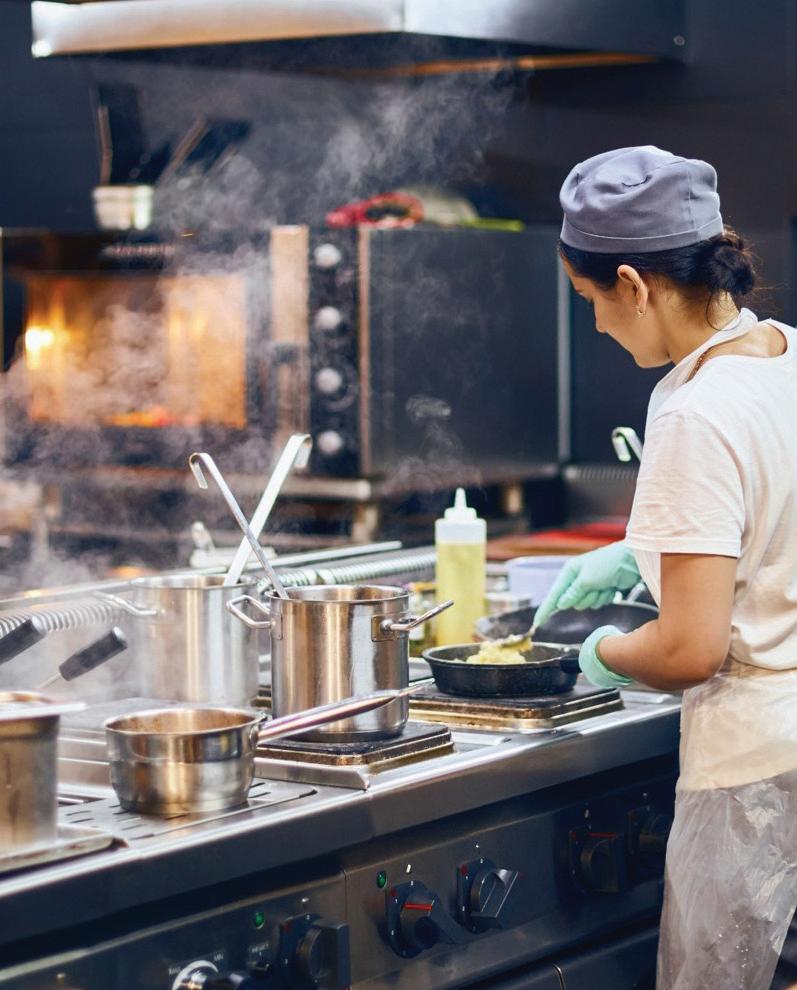
Developing a recruitment strategy is essential for any restaurant looking to attract and hire top talent. A well-planned recruitment strategy can help you identify the right candidates for your business and ensure that you have a strong and engaged workforce. Here are some steps to develop an effective recruitment strategy.


1. Determine Your Hiring Needs: The first step in developing a recruitment strategy is to determine your hiring needs. This includes identifying the specific roles and responsibilities you need to fill, as well as the skills and qualifications required for each position. Consider the size and scope of your business, your hours of operation, and any peak periods of business, and create a list of the positions you need to fill.
2. Define Your Employer Brand: Your employer brand is the image and reputation of your business as an employer. It’s essential to define and promote your employer brand to attract top talent. This includes highlighting your company culture, values, and mission, as well as any unique benefits or perks that you offer. Your employer brand should be reflected in all your recruitment efforts, from job postings to interviews and beyond.
3. Develop Job Descriptions: Once you have determined your hiring needs, the next step is to develop job descriptions for each position. Job descriptions should be clear and concise, outlining the specific responsibilities and requirements of each role. Be sure to include any required qualifications, such as education, experience, and certifications, as well as any preferred qualifications that may be beneficial.
4. Create a Recruitment Plan: A recruitment plan outlines the specific steps you will take to attract and hire top talent. This may include posting job listings on job boards, social media platforms, and your company website, as well as reaching out to industry associations or universities to recruit candidates. It’s important to develop a timeline and budget for your recruitment plan to ensure that you can attract and hire the best candidates.
5. Screen and Interview Candidates: Once you have received applications and resumes, the next step is to screen and interview candidates. This includes reviewing resumes, conducting phone screenings, and scheduling in-person interviews. It’s important to have a consistent and fair process for screening and interviewing candidates, including using a set of standardized questions and evaluation criteria.
6. Make an Offer and Onboard: Once you have identified the right candidate, the final step is to make an offer and onboard the new hire. This includes negotiating salary and benefits, providing necessary paperwork and training, and introducing the new employee to your team and workplace culture.
Sysco Studio can help with creating marketing assets to support your recruitment efforts including hiring banners, posters and window clings as well as social posts
Having a great program in place for server training, can reduce your staff turnover and make your employees happier. As stated earlier, it will in turn help your restaurant exceed your patrons’ expectations. Organize your training process to include the following details:

• Job descriptions
• Server training checklists
• Menu abbreviations
• Assembling an order
• Basic training demonstrations – how to refill water glasses, serve cracked pepper, open and pour wine
• Check writing procedures
• Tastings – let the chef present new menu items and describe the dishes
• Drink delivery
• Food running
• If you have staggering start times, include notes on bulletin board
• Creating an effective pre-shift meeting enables being part of the team
• Keep it short: Between 10 to 15 minutes
• Engage the staff by asking questions
• Never take for granted what your servers know
• Remember to include back-of-the-house or do it separate from front-ofthe-house
• Utilize pre-shift meetings to talk about the specials of the day
• Ask each server to use adjectives to describe menu items
• Discuss pairings (beverage or appetizer)
• Allow the servers to taste new menu items
• Leverage the Recipe Cards in Sysco Studio to educate your staff on the menu items enabling upselling
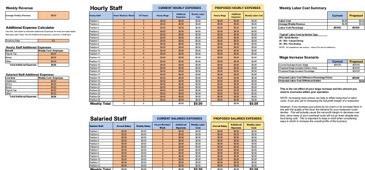
As your partner, Sysco has provided a Labour Cost Calculator within Sysco Studio to make it easier for you to understand the full scope of your costs. As one of your biggest expenses, labour cost is an essential metric to track and should be considered when reviewing your overall profit picture.
For each staff member, enter the appropriate labour information, including hourly wage or annual salary, and hours worked. Based on your data, the Labour Cost Calculator will automatically factor your Total Labour Cost.
By entering your Weekly Revenue, your Labour Cost Percentage is automatically calculated. Although percentage of labour costs varies from restaurant to restaurant, most operators look to have a labour cost percentage between 25%35% of sales. Here are a few guidelines depending on your service style:
• 25-30% Casual Dining
Based on the menu and methods of service
• 30-35% Fine Dining
Based on in-house food production and service components

• 25% Quick Service

With this essential data now in hand, it’s time to turn your attention to your menu item pricing. The Wage Increase Scenario in the Labour Cost Calculator can assist you to determine the value of menu price adjustments needed to overcome potential profit loss.
RESOURCES FOR HIRING If you are a member of your local Restaurant Association you may be able to add additional job postings, attend webinars, and implement best practices. It may take some research to find additional help, but there are several local venues that could be a great resource:
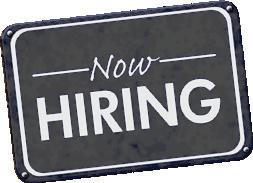
• Top hiring sites


• Local educational culinary programs
• Job fairs
• Hospitality job boards
How do you keep your staff happy? Restaurants are known for high stress shifts in hot kitchens and few employee benefits. What will motivate your staff to stay? Consider pursuing opportunities that offer competitive compensation, work perks, meaningful employee benefits, and a safe, supportive working environment.

• Your existing staff are extremely valuable. Replacing employees is costly and requires additional time, which is already at a shortage
• Fair compensation
• Gain feedback from your current staff and create an action plan based on their constructive comments
• Remember loyalty is earned through respect, honesty, appreciation, and transparency
• Profit-sharing
• Employee benefits
• Healthcare after a certain time frame
• PTO based on number of hours worked

• Employee referral program

• Open book management (transparency of P&L, posting of food costs and show goal)
• Create a management internship program or a career path for employees
• Cross training within your restaurant
• Match new hires with other team members who can mentor or help them with direction through personal challenges
• Long-term and short-term bonus sign-ons
• Pivot from full service to quick service
• Build relationships in your community
FEEDBACK

Open and honest communication is key to workplace quality
BENEFITS
Incentives like profit sharing and PTO keep employees engaged in your business
Structured career paths are important for staff retention
• Define your values and expectations and communicate them
• Demonstrate the behaviour you expect from your employees by setting the example
• Handle complaints by acknowledging the situation and resolve quickly

• Ask your employees how they would handle the problem and give them the opportunity to voice their concerns; be sure to ask them for solutions
• Creating an effective pre-shift meeting enables being part of the team
• Outing at the end of the year
• Free meal after a shift or during a shift
• Pay back unused PTO at end of year
• Celebrate holidays with a staff party or dinner
• Conduct contests to drive upselling
• Close the restaurant for the night for a staff party
• Implement a Buy A Drink for the Staff Programencouraging guests to participate and purchase a drink for the staff, an extra acknowledgment beyond the tip.
• Table set for the staff – reserved table for those employees coming in after hours


Sysco’s team of Business Resource experts offer customers personalized in-depth consultations based on their objectives that cover everything from understanding P&L Statements to developing new Menu Solutions. Our goal is to create a profitable and supportive partnership between you and Sysco by reviewing your business goals regularly, assisting you with increasing your profitability, and creating new and exciting profit generating opportunities.
Our Category Specialists are experts in their field: produce, protein, seafood or others. They will identify items specific to our customers’ menus that will aid them in growing revenues, while keeping costs at a minimum. Our specialists are visiting customer’s kitchens every day. Reach out to your SC to get some time booked!


Your Culinary Consultants host inhouse kitchen visits with customers to focus on cost saving in the back of the house. They feature valueadded, less labour intensive and cost effective items to increase profitability. Discussions can surround back of the house efficiencies such as portion control, waste management, and inventory practices. Your SC can schedule a kitchen visit at your convenience to learn more!

Chef Calculator - this calculator should be used to compare raw products that require labour to breakdown and prepare to items such as portion cut steaks and sliced or diced produce. We will need to weigh the waste associated with raw products to develop the yield ratio. This will enable us to then compare the true cost of producing the finished product and comparing it to the further processed item you are suggesting as a labour-saving product. Use this with the prep labour calculator for prime cost review.
Yield Charts - these simplify the process of weighing out the waste and calculating the yield ratio of usable/ purchased weight and provide a general expectation of what the yield should be on each product listed. Use to create accurate Sysco Studio batch recipes and plate builds.

Sysco vs. Wholesale Cost Calculator - What does that trip to local vendor really cost when all costs are added into the equation? Show them the value of what Sysco has to offer when the Sysco team professionally delivers quality assured, temperature-controlled products.


Sysco Studio - This powerful tool supports recipe costing by updating ingredient pricing and dialing in on portion and yield. It gives operators the power of knowledge and provides them with the ability to make smart choices on menu updates, portioning, and targeted marketing campaigns.


Batch Recipes (Sysco Studio) - Yield of the bulk recipe being created (such as salad dressing made by the gallon) is essential for understanding the cost of combining ingredients in a recipe and knowing the cost of ingredients to produce each plate. This value can than be used in plate recipes to accurately calculate plate costs of menu selections. This will enable operators to identify menu items that need price adjustments to correct the target food cost.
Menu Profit Calculator (Sysco Studio) - The profit calculator in Sysco Studio allows changes to menu prices to be entered so that operators can test drive the changes and know how it will affect the margins on each menu item. Volume adjustments can also be made to create hypothetical scenarios that help operators understand how decreases or increases in sales will affect overall profit.

Labour Cost Calculator - This calculator will tabulate the cost of current labour. It will allow tracking of labour costs to keep them in line with industry standards (see cheat sheet). You will also be able to predict labour cost increases for hourly and salaried employees to better understand the impact on your business as wages increase

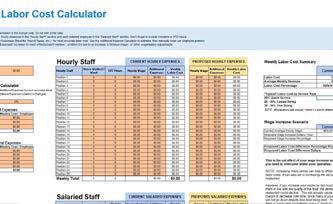

Inflation Calculator - In five easy steps, determine what the needed increase per guest check to manage inflation. This tool also include food costing and recipe costing tools.
Menu Engineering Worksheet - As you try to find ways to increase profits in your restaurant, the easiest way to do that is to maximize the profit dollars from your existing customers. In other words, if you have the exact same number of people eat at your restaurant in a given year, you still have the opportunity to achieve higher profits by encouraging your guests to order more profitable items. The menu engineering exercise will allow you, as a business owner, to take the emotion out of decisions you make pertaining to your menu and allow you to base those decisions on data and facts.
Prep Labour Cost Calculator - Dial in the cost of scratch made batch recipes by calculating the wages paid to prepare. This tool is useful in identifying who the productive members of the team are and who could use some retraining or reassignment. It can also be used to average the cost of prep labour to better understand the associated costs of scratch recipes beyond food costs.
Labour Simulator - As part of the Financial Planning Calculator workbook, this easy to use calculator provides managers with a tool to estimate what the business can afford when faced with decreasing sales forecasts. Input your labour costs and the expected decrease in sales. The calculator does the math and the result is what you’ll actually be able to afford based on the predicted decline in sales.
Prime Cost Calculators - This is perhaps the most important of all. It combines the two most costly budget items of every restaurant’s P&L. Food cost + Labour cost = Prime cost. Depending on service type, it generally is targeted to run 60%-65% of total revenue
P&L calculator - This great Sysco tool is the culmination of data from all the other sources and calculators. It combines reporting on revenue (what is sold) and expenses (what it cost to sell). The challenge is accurate and timely recording of data such as inventory and labour costs, so operators can see if they are making money, breaking even, or losing money. Fixed costs – these rarely change but can be negotiated. An example is rent. Variable costs – food and labour costs are the big variables and operators should focus on managing these variable costs to maximize bottom line improvement.

Break-Even Calculator - great tool included with the P&L calculator. It calculates what amount of revenue is needed to pay the bills and keep the lights on based on operational expenses and expected sales.
Sysco Scheduling Tool - This great tool allows operators to schedule around employee availability and shift level needs. It also includes the Wage Impact Calculator to allow operators to calculate the impact of wage increases and come up with a plan to offset them through various operational savings and revenue growth goals.






Budget Builder P&L Tool - Great new tool developed for operators to start budgeting and managing to their goals. Enter the numbers and watch the magic happen. Available in Calendar and Fiscal year formats
Weekly Tracker Tool - Don’t wait until the end of the month to see if you are on budget. This supplemental tool will help managers keep the business profitable. Use it with the Budget Builder and give managers an easy way to track revenue and expenses while proactively keeping the numbers of the P&L in line.
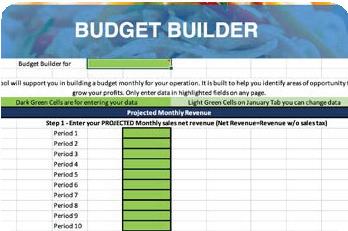
SVK is a live and on demand foodservice Network that concentrates on serving up foodservice insights, tips, tools, resources and everything else operators and other professionals need to succeed in foodservice. While offering professional information, the ultimate focus has been on creating an authentic grassroots industry network that helps foodservice operators not only adapt and progress their business forward, but also feel connected as a community and share stories of ideas, inspiration, and innovation.
A daily foodservice show streaming LIVE on all social media channels plus OnDemand.
SVK Popup audio are integrated into in-person industry events across Canada, interviewing event guests, customers, industry experts, chefs and foodies during the event.


A weekly podcast show targeting the foodservice industry and shared on all podcast networks.

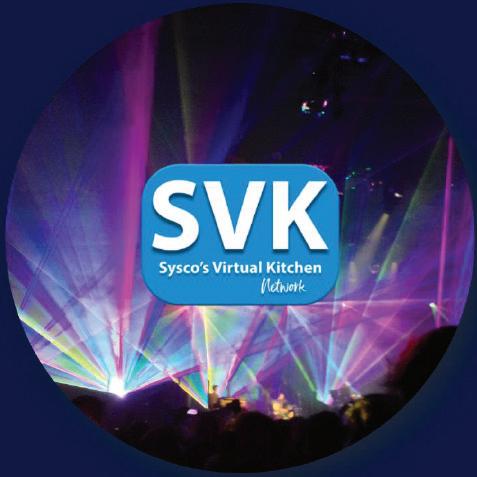

YouTube, Facebook, iHeart Radio, LinkedIn, Twitter, Twitch, iTunes, Spotify, Amazon and Google.










